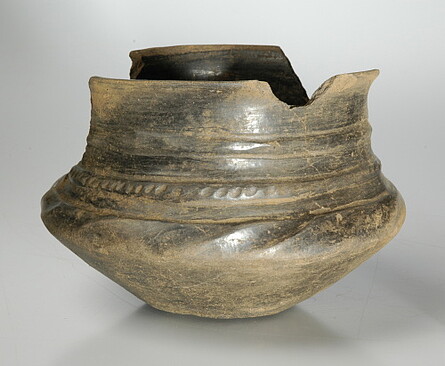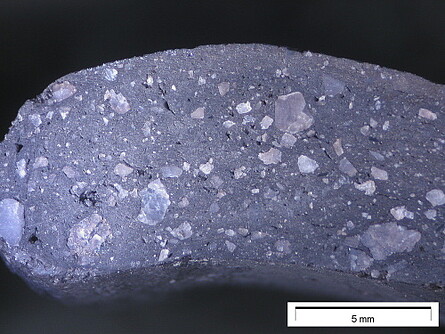The pottery from Flögeln-Eekhöltjen and Loxstedt-Littstücke, District of Cuxhaven
Within the scope of the German Research Foundation (DFG)-funded project “Development history of a settlement micro-region (Siedlungskammer) in the Elbe-Weser Triangle since the Neolithic”, the NIhK carried out an excavation covering 11 ha in a field called “Eekhöltjen”, recording the 1st to 6th century AD-development of a rural settlement within the area of the “Geestinsel” (habitation isle on Pleistocene sandy soil) of Flögeln, District of Cuxhaven. In addition, a protohistoric settlement area measuring 16.5 ha and located 30 km to the southwest of Flögeln near Loxstedt was archaeologically recorded through rescue excavations carried out in cooperation between the NIhK and the Archaeological Heritage Service of the District of Cuxhaven. Settlement here started at the same time as in Flögeln but did not end until the 9th or 10th century. Not only did the excavations uncover the remains of numerous buildings, fences, wells and other structural evidence, but they also yielded a comprehensive finds assemblage, consisting predominantly of pottery. The analysis of the pottery assemblage was the subject of a project funded by the Lower Saxony Ministry for Science and Culture (MWK) from 2006 to 2008. D. Nösler, the researcher in charge of the investigation, intends to analyse the project results within the scope of his ongoing doctoral thesis.
The main emphasis of the analysis focussed on the development of the pottery (shape, decoration and fabric). Questions of typology, function and chronology as well as manufacturing technology were of particular interest. In order to address the latter, scientific analyses of selected pottery samples were carried out in conjunction with the Laboratory for Ceramic Research of Lund University with the aim of identifying possible changes in technology and of materials used.
Another focus of the study was the discussion of the late Migration Period settlement hiatus. Palynological studies have confirmed an abandonment of settlement for Flögeln. In contrast, there was settlement continuity at Loxstedt from the 1st to the 9th/10th century AD. One of the projects foci, therefore, concentrated on the analysis of 6th/7th-century pottery from Loxstedt.
The project’s results have so far only been published in preliminary reports.
Bibliography
Nösler, D., u. Stilborg, O., 2010: Shape and Ware. Notes on a progressing study of Iron Age and Early Medieval pottery from Flögeln-Eekhöltjen and Loxstedt-Littstücke in the Elbe-Weser-Triangle. In: B. Ramminger u. O. Stilborg (Hrsg.): Naturwissenschaftliche Analysen vor- und frühgeschichtlicher Keramik I. Methoden, Anwendungsbereiche, Auswertungsmöglichkeiten. Universitätsforschungen zur prähistorischen Archäologie 176, 101–115. Bonn.
Nösler, D., u. Wolters, S., 2009: Kontinuität und Wandel – Zur Frage der spätvölkerwanderungszeitlichen Siedlungslücke im Elbe-Weser-Dreieck. In: O. Heinrich-Tamaska, N. Krohn u. S. Ristow (Hrsg.), Dunkle Jahrhunderte in Mitteleuropa? Tagungsbeiträge der Arbeitsgemeinschaft Spätantike und Frühmittelalter. 367–388. Hamburg.#
Nösler, D., 2013: Rhein-weser-germanische Keramik als Import im Elbe-Weser-Dreieck? In: G. Rasbach (Hrsg.), Westgermanische Bodenfunde. Akten des Kolloquiums anlässlich des 100. Geburtstags von Rafael von Uslar am 5. und 6. Dezember 2008. Kolloquien zur Vor- und Frühgeschichte 18 (Bonn 2013) 171-190.


